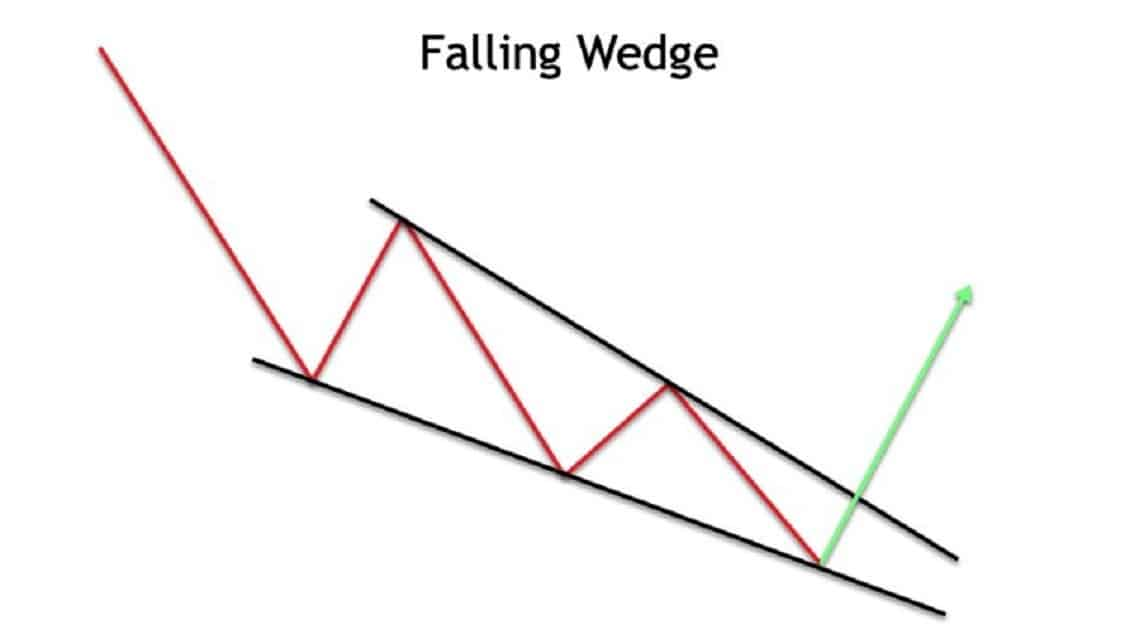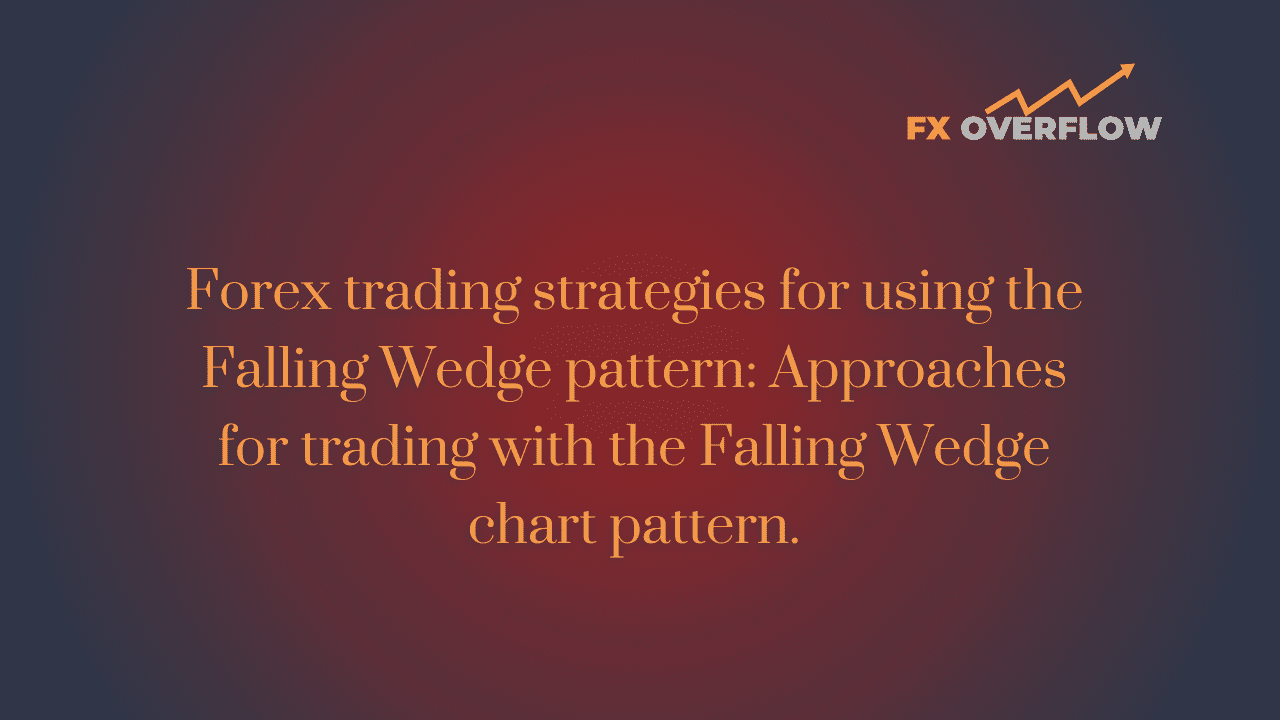Forex Trading Strategies for Using the Falling Wedge Pattern: Approaches for Trading with the Falling Wedge Chart Pattern
Forex trading is a complex venture that requires traders to utilize a variety of tools and strategies to achieve success. One such tool in a trader's arsenal is chart patterns, which can provide valuable insights into market trends and potential price movements. Among these patterns, the Falling Wedge is a noteworthy one that offers opportunities for traders to profit from price reversals and breakouts. In this article, we will delve into the intricacies of the Falling Wedge pattern and explore effective trading strategies to capitalize on its potential.
Table Content
I. Understanding the Falling Wedge Pattern
II. Approaches for Trading with the Falling Wedge Chart Pattern
1. Identifying the Falling Wedge
2. Confirming the Breakout
3. Setting Stop-Loss and Take-Profit Levels
4. Trading the Breakout
5. Volume Confirmation
6. Measuring Price Targets
7. Combining with Other Indicators
III. FAQs about Forex Trading with the Falling Wedge Pattern
IV. Footnote
Understanding the Falling Wedge Pattern
The Falling Wedge is a bullish reversal pattern that occurs after a downtrend. It resembles a contracting triangle sloping downward against the prevailing trend. This pattern is formed by two converging trendlines – a downward-sloping resistance line and a steeper upward-sloping support line. What makes the Falling Wedge unique is that, despite its name, it actually indicates potential bullish price movement.

The psychology behind the Falling Wedge pattern involves a gradual weakening of the selling pressure, indicated by the decreasing amplitude of price swings within the pattern. As the price moves within the wedge, buyers gradually gain strength, leading to an eventual breakout to the upside.
Approaches for Trading with the Falling Wedge Chart Pattern
Trading the Falling Wedge pattern involves a systematic approach that takes into account the pattern's characteristics and the market context. Here are some strategies to consider:
1. Identifying the Falling Wedge: The first step is to accurately identify the Falling Wedge pattern on the price chart. Look for at least two reaction highs and two reaction lows that can be connected using the trendlines. The upper trendline represents the resistance, while the lower trendline acts as the support.
2. Confirming the Breakout: While the Falling Wedge suggests an impending bullish breakout, it's essential to wait for confirmation. A breakout occurs when the price closes above the upper trendline, indicating a potential reversal of the downtrend. Traders often use candlestick patterns or momentum indicators to confirm the breakout.
3. Setting Stop-Loss and Take-Profit Levels: To manage risk, set a stop-loss just below the lower trendline to protect your position from potential false breakouts. Take-profit levels can be set based on nearby resistance levels or previous swing highs.
4. Trading the Breakout: Once the breakout is confirmed, traders can enter a long position. This can be done either at the breakout point or on a pullback to the upper trendline, which now acts as a support level.
5. Volume Confirmation: Volume plays a crucial role in confirming the validity of the breakout. An increase in volume as the price breaks out of the Falling Wedge adds credibility to the move and suggests stronger market participation.
6. Measuring Price Targets: The traditional method to project the potential price target after a Falling Wedge breakout is to measure the height of the widest part of the wedge and project it upwards from the breakout point. This provides an estimate of how far the price might move.
7. Combining with Other Indicators: Enhance your strategy by using other technical indicators such as moving averages, RSI (Relative Strength Index), or MACD (Moving Average Convergence Divergence) to confirm the strength of the trend and potential entry points.
FAQs about Forex Trading with the Falling Wedge Pattern
Q1: Can the Falling Wedge pattern also be bearish?
A: No, the Falling Wedge is inherently a bullish pattern. Its formation within a downtrend suggests a potential reversal to the upside.
Q2: Is the breakout always to the upside?
A: Yes, the breakout from a Falling Wedge is typically to the upside. It indicates a shift from a bearish trend to a potential bullish trend.
Q3: What timeframes are suitable for trading the Falling Wedge?
A: The Falling Wedge can be identified on various timeframes, from intraday charts to daily or weekly charts. However, longer timeframes may provide more reliable signals.
Q4: Can the pattern fail?
A: Yes, like any trading pattern, the Falling Wedge is not foolproof. False breakouts can occur. This is why it's crucial to wait for confirmation and use proper risk management techniques.
Q5: How do I differentiate between a Falling Wedge and a Descending Triangle?
A: While both patterns slope downward, a Falling Wedge has a steeper slope for the lower trendline, whereas a Descending Triangle has a horizontal support line. Additionally, the Falling Wedge is a bullish pattern, while the Descending Triangle is often bearish.
Q6: Should I only trade the Falling Wedge in isolation?
A: It's wise to consider the Falling Wedge within the broader context of the market. Analyze other technical indicators, support/resistance levels, and overall market sentiment before making trading decisions.
Footnote
The Falling Wedge pattern is a powerful tool in a forex trader's toolkit. Its ability to signal potential bullish reversals makes it a valuable pattern to master. However, traders should exercise caution and patience, waiting for confirmation and using proper risk management techniques. By combining the Falling Wedge pattern with other technical indicators and a comprehensive understanding of market dynamics, traders can enhance their likelihood of success in the ever-changing forex market. Remember, no strategy guarantees success, so continuous learning and adaptation are key to becoming a successful forex trader.











Discussion